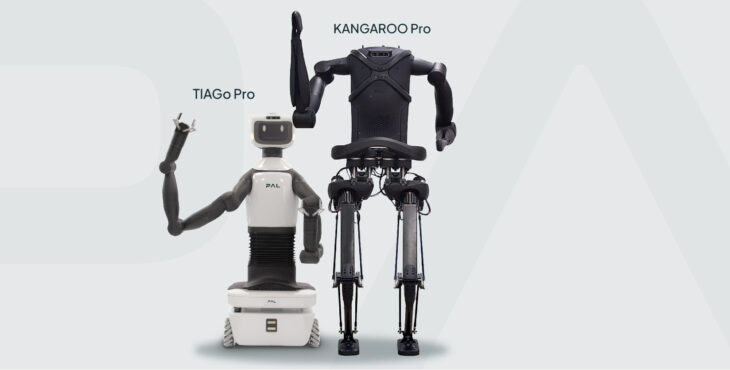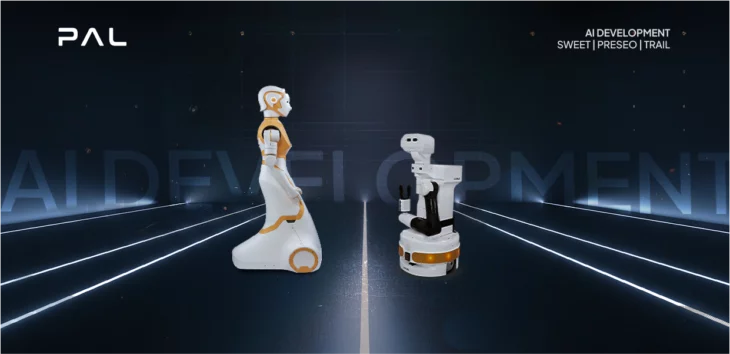Robots can help humans with high-risk jobs
To fight the spread of COVID-19, a scale of pandemic the world hasn’t seen in a long time, new and innovative solutions are urgently needed – and robots can offer just that. They are already being used in hospitals around the world to help fight coronavirus (COVID-19), particularly in China.
At a time when hospitals are dealing with shortages in staff and supplies, China, Thailand, South Africa and India are just some of the countries that are using robots to help with the coronavirus pandemic.
Robots can support humans with jobs that are high risk, including disinfection of spaces, temperature taking, delivering supplies and serving food. They can also easily be cleaned and disinfected to continue to offer risk-free support to workers, patients and the public.
A country leading in the use of robotics to fight coronavirus is China. For example, a robot in Wuhan is spraying disinfectant through residential areas of the city, a patrol robot in a hospital in Shenyang checks people’s temperatures and disinfects spaces, and engineers have modified robots to record data, give feedback, and even disinfect people’s hands in Hunan. The UK and the US are some of the countries that have also used robots for the delivery of food and supplies.
We regularly adapt our robots for new uses
At PAL Robotics we are already regularly customizing and adapting our robots so that they can be used in European-funded research projects. The overall aim of these projects is to make new robot uses, such as widespread use in hospitals and residential homes, a reality. Such testing of our robots in new scenarios therefore makes them viable to be quickly incorporated into medical settings to help fight coronavirus (COVID-19).
Our robots including ARI, TIAGo and TIAGo Base have the capacity to support hospitals in a number of ways. The potential services they can bring includes: food delivery, telepresence, medical dispatching, disinfection of areas and human temperature checking. Here are some examples.
ARI – for interaction with patients and detecting temperatures
Our ARI robot tackles at least two main problems that hospitals and institutions are facing, especially in crisis situations: the lack of optimization in first hospital care, in particular where medical professionals are exposed to potentially ill patients with not enough protection or resources. And also widespread quarantine of users which may have a negative impact on mental health. ARI offers continued social interactions and adherence to treatment regimes without fear of spreading disease. It’s also possible to add a thermal camera to ARI’s head to detect temperatures.
TIAGo Base as TIAGo delivery – for delivery of food and supplies
Our TIAGo Base robot operates as TIAGo delivery – a solution that is used for food deliveries in hospitals and hotels. TIAGo Delivery carries objects such as medication and samples or food around in hospitals and similar environments. The autonomous robot delivers the different objects needed in a fast and safe way, minimizing social interactions and the spread of the infections thanks to its configuration organized on shelves.
TIAGo Base is also quite expandable, and our users expand its functionality adding elements that make a difference, such as UV-C lights for disinfection or an upper body capable of carrying different food trays for food delivery.


TIAGo Base as ADR – for disinfection of spaces
Our TIAGo Base robot operates as ADR – Autonomous Disinfection Robot – the disinfection robot is an autonomous solution able to perform the cleaning and disinfection in hospitals. ADR autonomously navigates in an environment finding the best route for ensuring the disinfection of the whole space with its UV-C lights. It can go into contaminated areas instead of cleaning staff, protecting them from possible sources of infection. This disinfection method is much faster than traditional methods, which is critical for the current situation.

TIAGo – for detecting temperatures and asking questions
Our TIAGo robot has a version equipped with a thermal camera in the robot’s head that takes temperatures from a distance for a group of people. This way, we can prevent social contact. The robot also asks questions and gets answers, together with the temperature monitoring. This alleviates the time for the first triage of possible cases and allows medical staff to focus on life saving tasks.

The COVID-19 crisis is bringing an urgent need for innovation in technology and robots are an important part of this. The pandemic has brought many changes that we didn’t expect, including new collaborations between teams of engineers and companies, and PAL Robotics is ready to help in any way possible. To find out more about PAL Robotics, visit our website and to ask more don’t hesitate to visit our contact page to reach out to us!
If you liked reading through this post, then don’t miss out our other posts about robotics and engineering!


